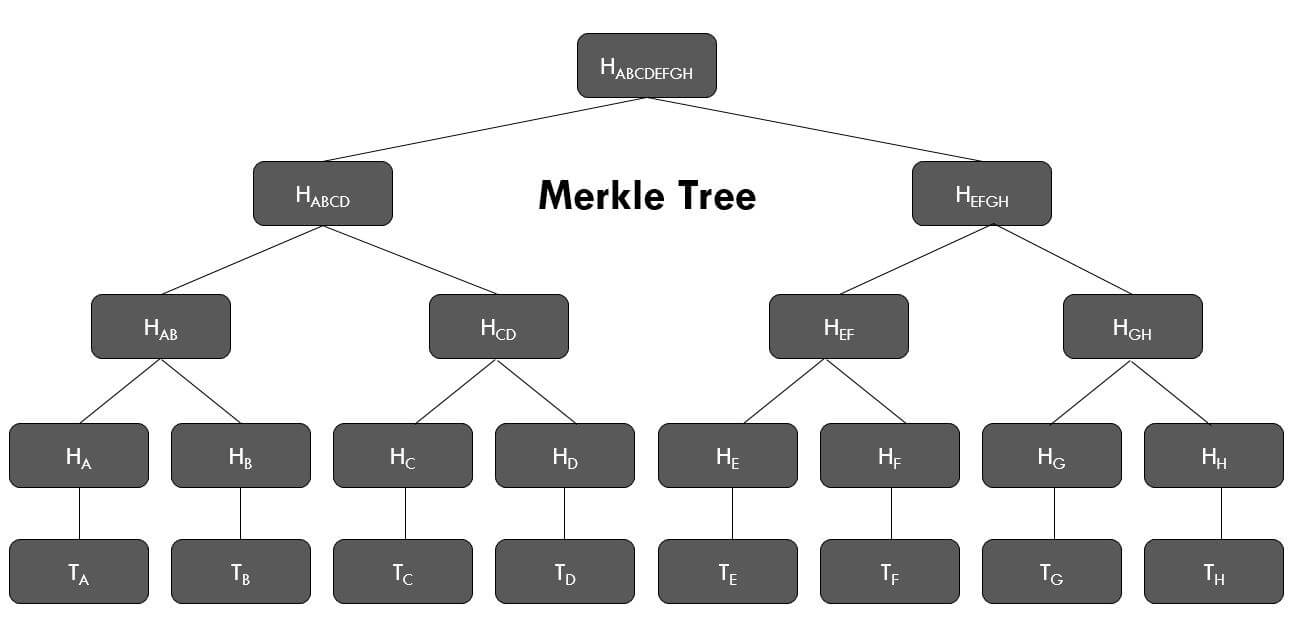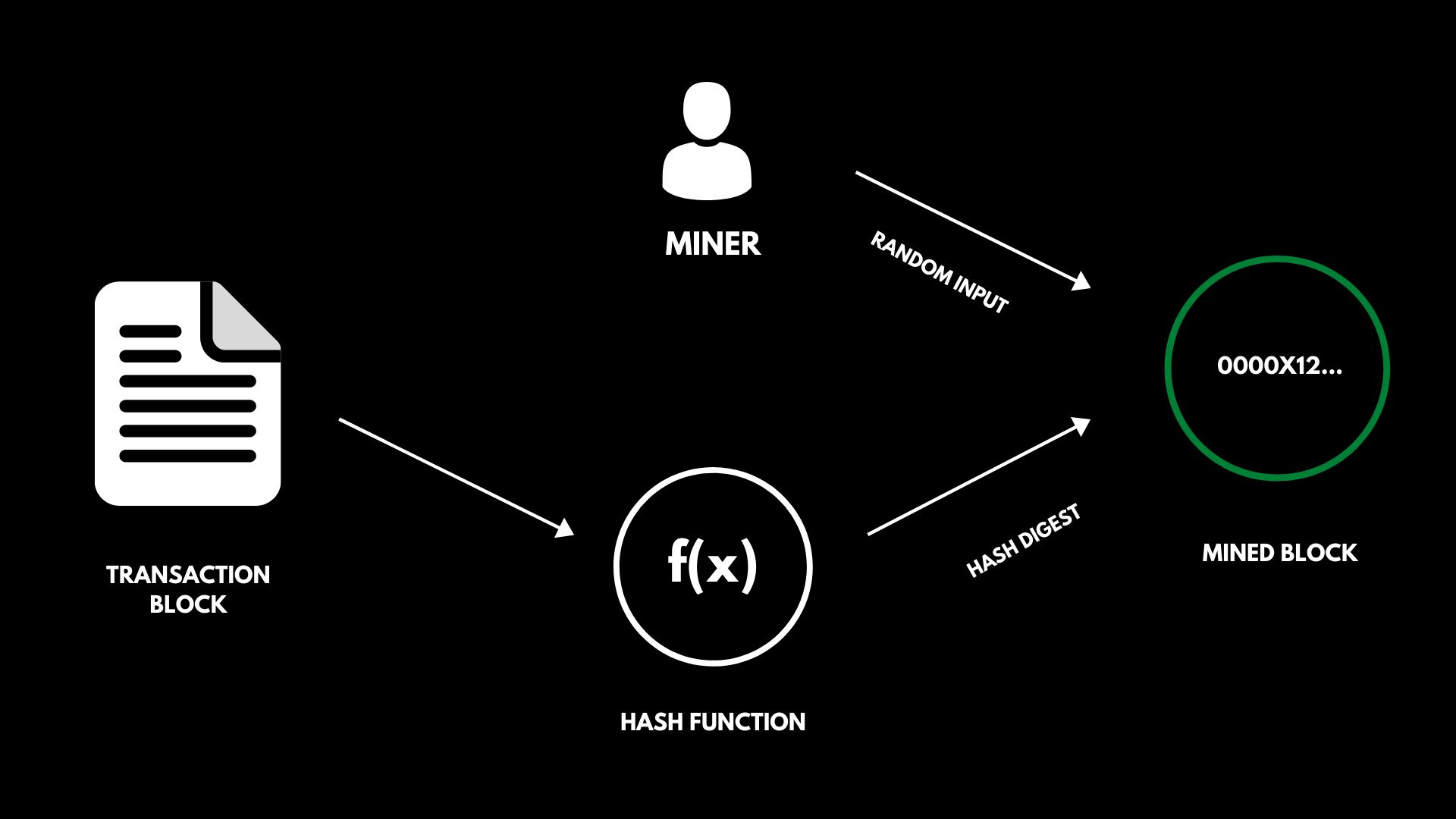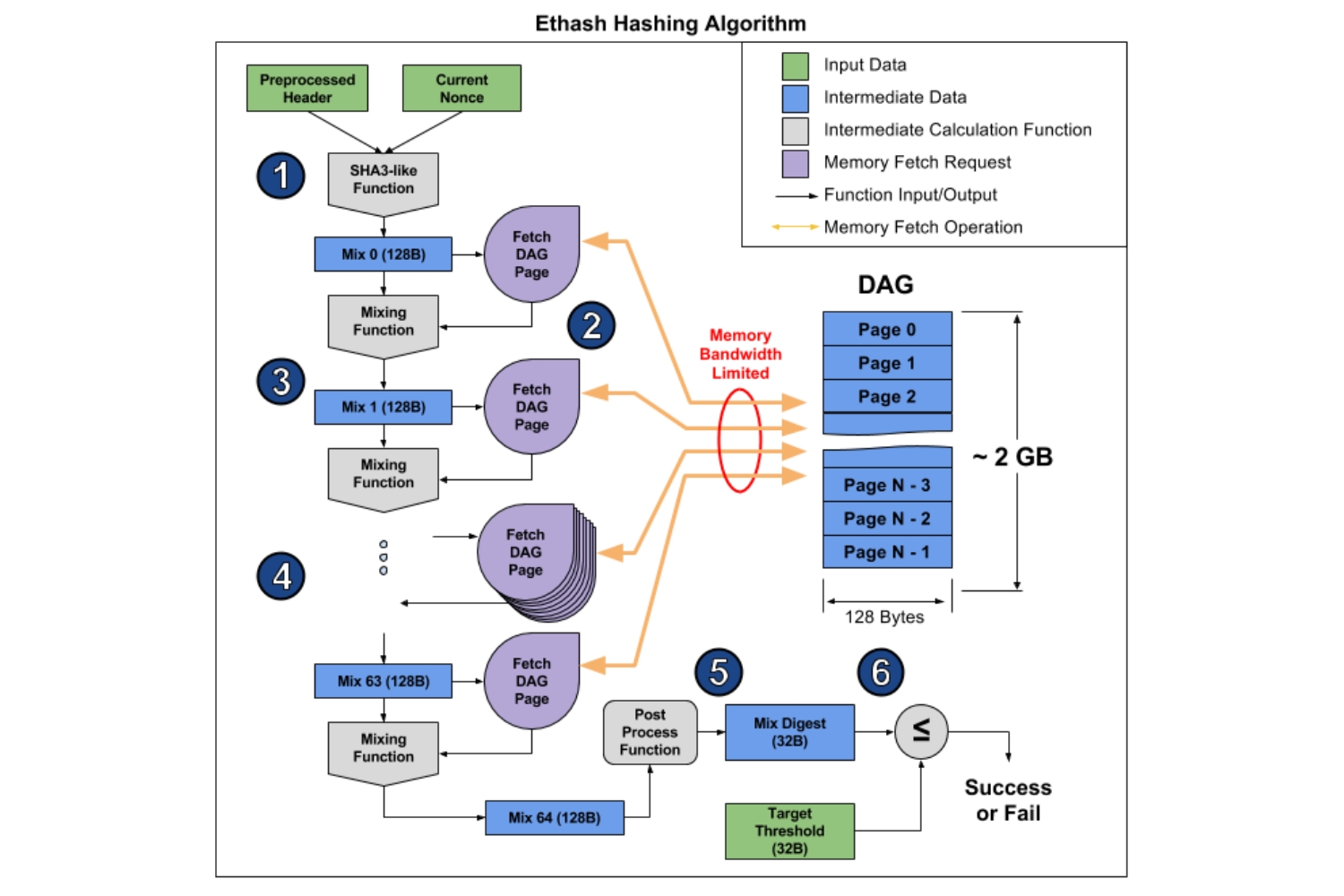Introduction
A Merkle Tree, named after computer scientist Ralph Merkle, is a fundamental concept in blockchain technology. It plays a crucial role in ensuring the integrity and security of data within a blockchain network. Understanding how a Merkle Tree works is essential for grasping the underlying principles of blockchain technology and how it achieves immutability and tamper resistance.
At its core, a Merkle Tree is a data structure that allows for efficient verification of data integrity in a large set of data. It achieves this by grouping individual data elements, also known as leaves, and hashing them to generate a unique identifier called a hash. These hashes are then combined and hashed again, forming higher-level nodes known as the Merkle root. This hierarchical structure allows for efficient and secure verification of the entire dataset by just comparing the Merkle root.
As blockchain technology relies heavily on data integrity and immutability, Merkle Trees serve as a critical component in achieving these goals. By hashing and organizing data in this manner, any change or tampering with a single data element would result in a different Merkle root, therefore alerting the network of a potential issue. This immutability property of Merkle Trees ensures that participants in a blockchain network can trust the integrity of the data they are interacting with.
Furthermore, Merkle Trees enable efficient verification of transactions or data within a blockchain network. Instead of needing to verify the entire dataset of a blockchain, which can be computationally expensive and time-consuming, participants can verify the authenticity of a specific transaction or piece of data by traversing the Merkle Tree from the root to the corresponding leaf node. This optimization allows for faster and more scalable verification, contributing to the overall efficiency of blockchain networks.
Overall, Merkle Trees are a foundational concept in blockchain technology that enables efficient and secure verification of data integrity. By leveraging the hierarchical structure and cryptographic properties of Merkle Trees, blockchain networks can achieve immutability, tamper resistance, and scalability. In the next sections, we will dive deeper into how Merkle Trees work and explore their various use cases within the blockchain ecosystem.
What is a Merkle Tree?
A Merkle Tree, also known as a hash tree, is a hierarchical data structure that enables efficient and secure verification of data integrity within a blockchain network. It is named after its inventor, Ralph Merkle, and has become a fundamental concept in the field of cryptography and blockchain technology.
At its basic level, a Merkle Tree takes a collection of data elements, also known as leaves, and organizes them into pairs. Each pair of leaves is then concatenated and hashed together, resulting in a unique hash value. This process is repeated until a single hash, known as the Merkle root, is obtained.
The Merkle root is the topmost hash in the tree and serves as the digital fingerprint of the entire dataset. It allows for quick verification of the integrity and authenticity of the data. Any change to a leaf node will result in a different hash value for the corresponding branch, and ultimately, a different Merkle root.
One of the key advantages of using a Merkle Tree is its efficiency. With a large dataset, the Merkle Tree reduces the computational burden of verifying data integrity. Instead of comparing each individual data element, participants in a blockchain network can simply compare the Merkle root. This makes it easier to identify any tampering or modification of data.
Moreover, Merkle Trees provide a secure way of structuring data. Since each hash in the tree is dependent on its children, it becomes computationally infeasible to tamper with data without altering the Merkle root. This property ensures the immutability of the dataset and makes Merkle Trees an essential component of the cryptographic foundation in blockchain technology.
In addition to their role in data integrity, Merkle Trees also contribute to the efficiency and scalability of blockchain networks. By allowing for quick verification of data, Merkle Trees reduce the computational overhead of validating transactions. This optimization helps to improve the overall performance of the blockchain and enables faster transaction confirmations.
Overall, a Merkle Tree is a hierarchical data structure that plays a crucial role in ensuring the integrity and security of data within a blockchain network. By organizing data into a tree-like structure and using cryptographic hashing techniques, Merkle Trees allow for efficient and secure verification of data integrity. In the next section, we will explore how Merkle Trees work in more detail.
How does a Merkle Tree work?
A Merkle Tree is a hierarchical data structure that operates on the principle of hashing. It organizes data into a tree-like structure, with individual data elements, or leaves, at the bottom and a single hash, known as the Merkle root, at the top. The process of building a Merkle Tree involves several steps:
-
Step 1: Data Partitioning
The first step in constructing a Merkle Tree is partitioning the data into individual elements, also known as leaves. These leaves can represent any type of data, such as transactions in a blockchain or files in a file-sharing system. -
Step 2: Hashing
Each leaf in the Merkle Tree is hashed using a cryptographic hashing algorithm, such as SHA-256. Hashing converts the data into a fixed-length string of characters, which serves as a unique identifier for that particular data element. The resulting hashes become the first level of nodes in the Merkle Tree. -
Step 3: Pairing and Hashing
The next step is to pair adjacent hashes and concatenate them together. These concatenated hashes are then hashed again, creating a new set of hashes. This process is repeated until there is only one hash left, known as the Merkle root. If the number of hashes at any level is odd, the last hash is duplicated and used as an additional pairing.
With this structure, the final hash, or Merkle root, represents the entire dataset’s integrity. Any change or tampering with even a single leaf node will result in a completely different Merkle root. This creates a tamper-evident structure that allows participants in a blockchain network to quickly verify the integrity of the data without having to check each individual element.
One key advantage of Merkle Trees is their efficiency in verifying data integrity. Instead of comparing each individual data element, participants only need to compare the Merkle root. This significantly reduces the computational burden and simplifies the verification process, especially in large datasets.
Another advantage is the scalability and incremental updating of Merkle Trees. When new data is added to the dataset, only the affected branches need to be recomputed, rather than rebuilding the entire tree. This allows for efficient updates and reduces the overhead associated with maintaining a Merkle Tree.
In summary, a Merkle Tree works by partitioning data into leaves, hashing each leaf, and then pairing and hashing the resulting hashes until a single hash, the Merkle root, is obtained. This hierarchical structure allows for efficient and secure verification of data integrity within a blockchain network. In the next section, we will explore the advantages of using Merkle Trees in the context of blockchain technology.
Advantages of using Merkle Trees in Blockchain
Merkle Trees offer several significant advantages when it comes to implementing blockchain technology. These advantages contribute to the overall integrity, security, and efficiency of blockchain networks. Let’s explore some of the key benefits:
-
Data Integrity
One of the primary advantages of Merkle Trees is the ability to ensure the integrity of data within a blockchain network. The structure of the Merkle Tree allows for efficient verification of the entire dataset by comparing just the Merkle root. Any modification or tampering with a single leaf node will result in a different Merkle root, exposing the tampering attempt. -
Efficient Verification
Merkle Trees allow for efficient verification of data within a blockchain network. Rather than verifying each individual data element, participants can simply traverse the Merkle Tree from the root to the corresponding leaf node. This optimization significantly reduces the computational burden for verifying data integrity, making blockchain networks more efficient and scalable. -
Tamper Resistance
Merkle Trees provide a high level of tamper resistance. As the structure depends on the hashing of each level’s nodes, any alteration to the data in a leaf node will result in a different hash value and ultimately lead to a different Merkle root. This property makes it computationally infeasible to tamper with data without detection. -
Incremental Updates
Merkle Trees allow for incremental updates, making it efficient to add or remove data from a blockchain. When new data is added, only the affected branches need to be recomputed, rather than rebuilding the entire tree. This optimization reduces the computational overhead associated with maintaining the Merkle Tree and improves the overall performance of the blockchain network. -
Scalability
By providing an efficient way to verify data integrity, Merkle Trees contribute to the scalability of blockchain networks. With the ability to quickly verify data through the Merkle root, participants can process transactions and validate blocks more efficiently. This scalability is crucial for the widespread adoption and usability of blockchain technology.
These advantages make Merkle Trees a vital component of blockchain technology. They ensure data integrity, provide efficient verification, offer tamper resistance, enable incremental updates, and contribute to the scalability of blockchain networks. The use of Merkle Trees enhances the trustworthiness and security of blockchain applications in various domains, ranging from finance to supply chain management.
In the next section, we will explore some of the use cases where Merkle Trees are utilized in blockchain technology.
Use Cases of Merkle Trees in Blockchain
Merkle Trees play a critical role in various use cases within the realm of blockchain technology. Their ability to ensure data integrity, provide efficient verification, and offer tamper resistance makes them invaluable for a wide range of applications. Let’s explore some of the key use cases:
-
Transaction Verification
In blockchain networks, Merkle Trees are used to verify the integrity of transactions. Each transaction is represented as a leaf node in the Merkle Tree, and the Merkle root serves as a summary of all the transactions in a block. By comparing the Merkle root, participants can efficiently ensure that all transactions within a block are valid and have not been tampered with. -
Proof of Existence
Merkle Trees can be used to provide cryptographic proof of the existence of certain data in a blockchain network. By creating a Merkle Tree of all the data and hashing it, participants can generate a unique identifier for that specific set of data. This allows for secure and verifiable proof that the data existed at a certain point in time, which is useful in applications such as intellectual property protection or document notarization. -
Blockchain Synchronization
When nodes in a blockchain network synchronize their data, Merkle Trees are used to efficiently verify the consistency of the shared blockchain state. By comparing the Merkle root of their local data with the Merkle root of other nodes, participants can quickly identify any discrepancies or conflicting data. This ensures that all nodes have a consistent view of the blockchain and helps maintain the integrity of the network. -
Proof of Inclusion
Merkle Trees are used in proof-of-inclusion protocols, which allow participants in a blockchain network to prove that a specific transaction or piece of data is included in a block without revealing the entire block. By traversing the Merkle Tree from the Merkle root to the leaf node representing the transaction, participants can provide a concise and verifiable proof of the transaction’s inclusion, improving the efficiency of transaction validation. -
Lightweight Client Verification
Merkle Trees enable lightweight clients, such as mobile or IoT devices, to efficiently verify the authenticity of data in a blockchain network. By storing only the Merkle root for a particular subset of data, lightweight clients can verify the integrity of their data without needing to store or process the entire blockchain. This optimization allows for broader participation and reduces the resource requirements for participating in a blockchain network.
These are just a few examples of the many use cases of Merkle Trees in blockchain technology. Their ability to ensure data integrity, provide efficient verification, and offer tamper resistance makes them essential for a wide range of applications, including financial transactions, supply chain management, voting systems, and more.
Now that we have explored the use cases of Merkle Trees, let’s conclude by summarizing the key points discussed in this article.
Conclusion
Merkle Trees are a fundamental concept in blockchain technology that enables efficient and secure verification of data integrity. By organizing data into a hierarchical structure and leveraging cryptographic hashing algorithms, Merkle Trees ensure the immutability, tamper resistance, and scalability of blockchain networks.
In this article, we explored the intricacies of Merkle Trees, starting with the definition and working principles. We discussed how Merkle Trees partition data, hash the elements, and construct a hierarchical structure culminating in the Merkle root. This structure allows for efficient verification of data integrity by comparing just the Merkle root, saving computational resources and time.
Furthermore, we explored the advantages of using Merkle Trees in blockchain. From ensuring data integrity and providing efficient verification to offering tamper resistance and enabling incremental updates, Merkle Trees enhance the overall integrity, security, and scalability of blockchain networks.
We also touched upon various use cases where Merkle Trees are utilized in blockchain technology. They play a crucial role in transaction verification, proof of existence, blockchain synchronization, proof of inclusion, lightweight client verification, and more. These use cases demonstrate the versatile applications of Merkle Trees in different domains.
In conclusion, Merkle Trees are a cornerstone of blockchain technology, enabling efficient and secure verification of data integrity. With their ability to ensure the integrity of data, provide efficient verification, offer tamper resistance, and facilitate incremental updates, Merkle Trees enhance the trustworthiness and security of blockchain applications across various industries.

























